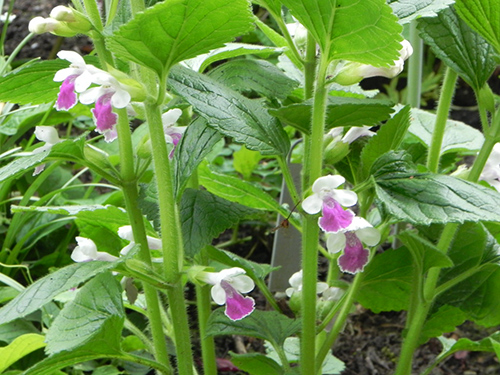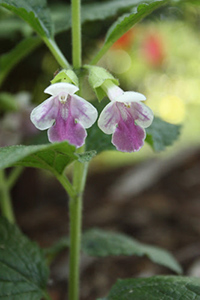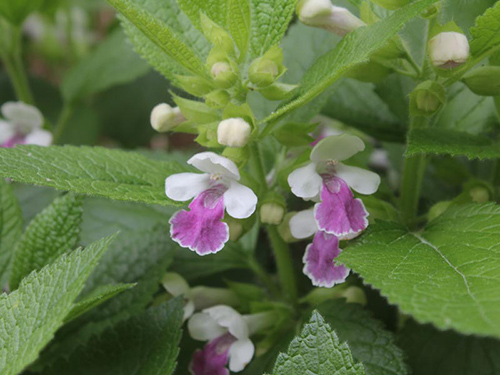Unlike the bee balm plant, the wild balm plant (Melittis melissophyllum) does not have a pleasant aroma. Its flowers grow in pairs and are larger and more exuberant than balm. The plant’s composition and properties are also different.

Wild Balm Scientific Facts
- French: Melisse des bois.
- Spanish: Toronjil silvestre, melisa silvestre.
- Environment: Oak or beech tree forests and unfarmed lands in Central and Southern Europe.
- Description: This vigorous plant of the Labiatae family grows up to 50 cm high. It has an upright stem, toothed leaves with marked nerves, and pink or white flowers.
- Parts of the plant used medicinally: The whole plant, except its root.
Healing Properties

The entire plant contains coumarin, which gives it diuretic and depurative properties, mild sedative and emmenagogue properties, and vulnerary properties (it heals wounds and bruises) when externally applied. The wild balm is used mainly as a depurative in spring treatments in central European countries.
Moreover, it promotes menstruation and eases the pain of dysmenorrhea, though it is not as effective as bee balm. As a vulnerary, it is used externally to heal wounds and alleviate pain and inflammation caused by bruises and sprains.

How to use Wild Balm
- Infusion with 20-30 grams per liter of water. Drink three cups daily. It may be sweetened with honey.
- Cleansing with a more concentrated infusion than internally (up to 60 grams per liter).
- Compresses soaked in the aforementioned concentrated infusion (up to 60 grams per liter) should be applied to the affected area.
DISCLAIMER: All content on this website is presented solely for educational and informational objectives. Do not rely on the information provided as a replacement for advice, diagnosis, or treatment from a qualified medical expert. If you are pregnant, nursing, or have any preexisting medical concerns, talk to your doctor before using any herbal or natural medicines.
REFERENCES
- George D. Pamplona-Roger, M.D. “Encyclopedia of Medicinal Plants.” George D. Pamplona-Roger, M.D. Encyclopedia of Medicinal Plants. Ed. Francesc X. Gelabert. vols. 2 San Fernando de Henares: Editorial Safeliz, 2000. 580. Print.[wild balm]
- https://www.longdom.org/proceedings/the-therapeutic-benefits-of-melittis-melissophyllum-extracts-in-wound-healing-39477.html
